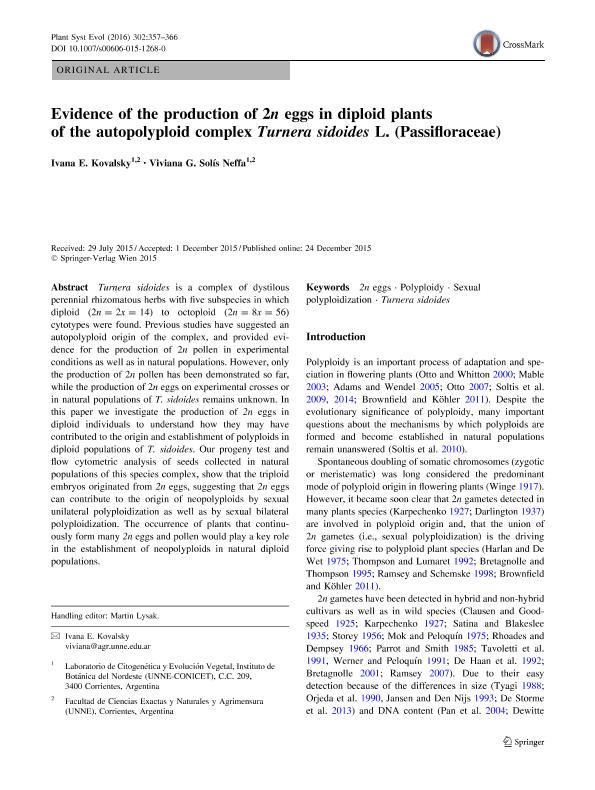Artículo
Evidence of the production of 2n eggs in diploid plants of the autopolyploid complex Turnera sidoides L. (Passifloraceae)
Fecha de publicación:
12/2016
Editorial:
Springer Wien
Revista:
Plant Systematics and Evolution
ISSN:
0378-2697
e-ISSN:
2199-6881
Idioma:
Inglés
Tipo de recurso:
Artículo publicado
Clasificación temática:
Resumen
Turnera sidoides is a complex of dystilous perennial rhizomatous herbs with five subspecies in which diploid (2n= 2x= 14) to octoploid (2n= 8x= 56) cytotypes were found.Previous studies have suggested an autopolyploid origin of the complex, and provided evidence for the production of 2n pollen in experimental conditions as well as in natural populations. However, only the production of 2n pollen has been demonstrated so far, while the production of 2n eggs on experimental crosses or in natural populations of T. sidoides remains unknown. In this paper we investigate the production of 2n eggs in diploid individuals to understand how they may have contributed to the origin and establishment of polyploids in diploid populations of T. sidoides. Our progeny test and flow cytometric analysis of seeds collected in natural populations of this species complex, show that the triploid embryos originated from 2n eggs, suggesting that 2n eggs can contribute to the origin of neopolyploids by sexual unilateral polyploidization as well as by sexual bilateral poliploidization. The occurrence of plants that continuously form many 2n eggs and pollen would play a key role in the establishment of neopolyploids in natural diploid populations.
Palabras clave:
Polyploidy
,
Sexual Polyploidization
,
2n Eggs
,
Turnera Sidoides
Archivos asociados
Licencia
Identificadores
Colecciones
Articulos(IBONE)
Articulos de INST.DE BOTANICA DEL NORDESTE (I)
Articulos de INST.DE BOTANICA DEL NORDESTE (I)
Citación
Kovalsky, Ivana Evelìn; Solis Neffa, Viviana Griselda; Evidence of the production of 2n eggs in diploid plants of the autopolyploid complex Turnera sidoides L. (Passifloraceae); Springer Wien; Plant Systematics and Evolution; 302; 4; 12-2016; 357-366
Compartir
Altmétricas




